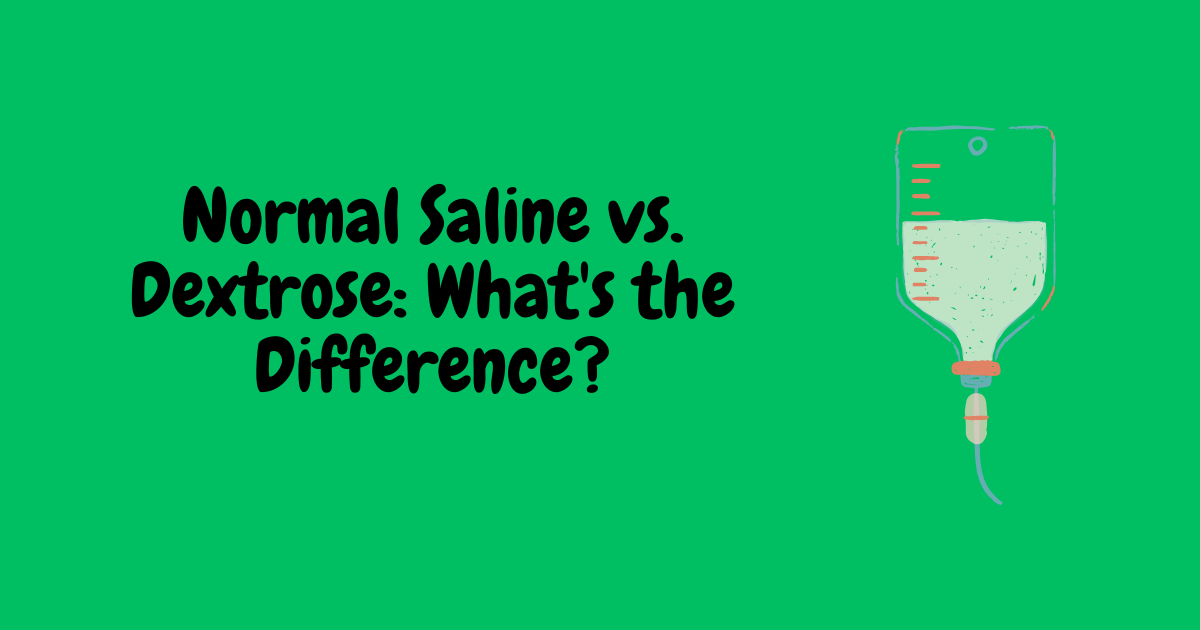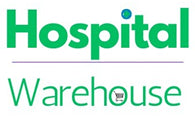
Normal Saline vs. Dextrose: What's the Difference?
We've all heard it before. You're at the hospital, and the doctor says, "Let's put them on a drip." But have you ever wondered what exactly is in that plastic bag hanging above the patient?
If you're curious about the clear liquids that seem to work magic in healthcare settings, you're in the right place. Today we're breaking down two of the most common IV fluids: Normal Saline and Dextrose Solutions. Don't worry, we'll keep it simple and interesting!
And if you are looking for any of these IV fluids, The Hospital Warehouse is your trusted supplier. Visit their product pages for unbeatable deals.
What Are IV Fluids?
Think of IV fluids as liquid lifelines. These are sterile solutions that doctors use to keep patients hydrated, deliver essential nutrients, and sometimes mix with medications. They go directly into your bloodstream through that tiny tube in your arm.
Normal Saline and Dextrose are both what we call crystalloids (fancy word for clear solutions), but here's the thing: they're like different tools in a toolbox. Each one has its own special job.
What Is Normal Saline?
Normal Saline sounds pretty boring, right? Well, don't let the name fool you. This clear liquid is actually 0.9% sodium chloride mixed with water. In simple terms, it's basically salt water that's perfectly balanced to match your body's natural fluids.
What makes it special?
- It's isotonic, which means it has the same salt concentration as your blood
- It won't shock your system or mess with your electrolyte balance
- It's like giving your body exactly what it expects
When do doctors reach for Normal Saline?
- When you're dehydrated (maybe from that nasty bout of food poisoning)
- During shock or after significant blood loss
- For cleaning wounds (yes, that sting you feel is often saline!)
- As a mixer for other medications
You'll find products like Normal Saline Eurocap 500ml in most Kenyan hospitals and clinics. It's the reliable workhorse of the IV world.

What Is Dextrose Solution?
Now, Dextrose is where things get interesting. This solution contains glucose (that's sugar to you and me) dissolved in water. It comes in different strengths, usually 5% or 10%, depending on how much energy punch you need.
Why is Dextrose amazing?
- It provides instant energy to your body
- Think of it as a direct fuel injection for your cells
- It can be isotonic (5%) or hypertonic (10%) depending on the concentration
When does Dextrose save the day?
- When someone's blood sugar drops dangerously low
- For patients who can't eat but still need calories
- When you need hydration plus an energy boost
- Sometimes combined with saline for the best of both worlds
Products like Dextrose 5% IV Eurocap 500ml are common sights in Kenyan healthcare facilities.

Normal Saline vs Dextrose: Key Differences
Let's put these two champions side by side:
| Feature | Normal Saline | Dextrose Solution |
|---|---|---|
| Main Ingredient | Sodium Chloride (salt) | Glucose (sugar) |
| Primary Job | Restores fluid balance | Provides energy + hydration |
| Concentration | Isotonic | Isotonic or hypertonic |
| Best Used For | Dehydration, shock, wound care | Low blood sugar, energy needs |
| Storage | Cool, dry place | Same as saline |
When to Use Normal Saline vs Dextrose
Here's where it gets practical:
Choose Normal Saline when:
- Someone is dehydrated from vomiting or diarrhea
- There's been blood loss from surgery or injury
- You need to flush out toxins or clean wounds
- The patient needs fluid replacement without extra calories
Go with Dextrose when:
- Blood sugar levels are too low (hypoglycemia)
- A patient hasn't eaten in a while but needs energy
- You want hydration plus nutritional support
- The body needs quick fuel for recovery
Sometimes doctors get creative and prescribe both together. It's like getting the hydration power of saline plus the energy boost of dextrose in one package!
Safety Considerations for IV Fluids
Now, before you start thinking you can DIY this stuff, hold up! These fluids should only be used under proper medical supervision. Here's why:
Too much Normal Saline can lead to fluid overload or mess with your sodium levels. Too much Dextrose might send your blood sugar through the roof.
It's like cooking. The right ingredients in the right amounts make a delicious meal. Too much salt or sugar? Not so great.
Availability of IV Fluids in Kenya
Good news! Both Normal Saline and Dextrose solutions are readily available across Kenya. You'll find them in hospitals, clinics, and even many pharmacies. They're sourced from reliable suppliers and are essential stock for any healthcare facility.
For hospitals and clinics, buying in bulk often makes economic sense. After all, these are the bread and butter of IV therapy.
Conclusion
Normal Saline and Dextrose are both medical heroes, but they wear different capes. Saline is your go-to for hydration and fluid balance, while Dextrose brings the energy when your body needs fuel.
The next time you or a loved one is "put on a drip," you'll know there's real science behind that clear liquid. Whether it's salt water helping restore balance or sugar water providing energy, both are working hard to help the body heal.
For healthcare providers: Keep both stocked in your facility. Your patients (and their bodies) will thank you for having the right tool for the right job.
Remember, when in doubt, always consult with healthcare professionals. They're the ones who know exactly which drip your body needs and when!

Leave a comment